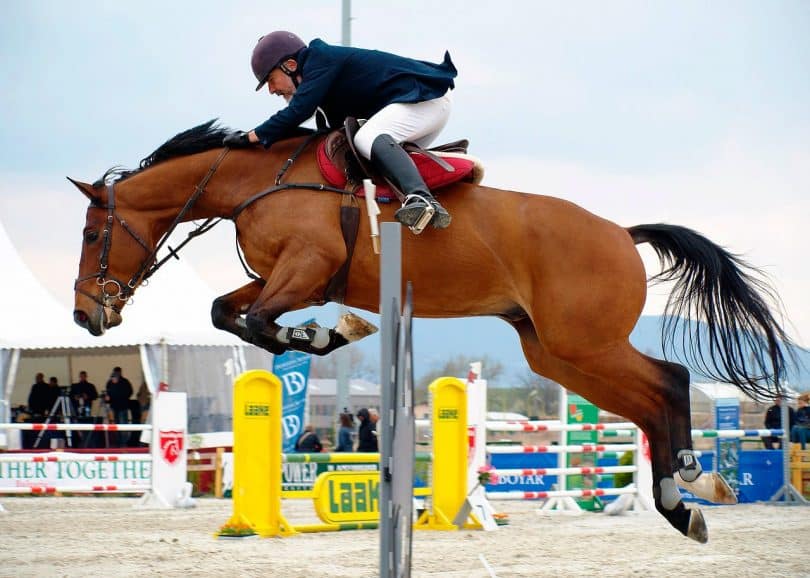You want the very best for your horse and yourself in the next equestrian competition. Everyone who rides a horse to the race wants everyone to admire him after the competition.
However, if you do not prepare in time, rushing to get things done can feel like a daunting task- bathing, trimming, polishing, and trimming can be quite demanding. Things needn’t turn out this way; if only you follow these tips in readiness for the next thrilling competition.
Tip # 1 Daily care
You can make a topcoat and trim as part of your regular routine. If you maintain a daily grooming routine, your horse will look tidy on a day-to-day basis. The coat will also need extra attention when preparing for a great occasion.
Initially, a daily grooming routine can appear demanding, but you realize it doesn’t take too much time as you get used to it. Use a rubber curry comb to loosen her hair, straighten the scurf and remove dirt. This is also an excellent way to remove dried mud and sweat.
You can also use a grooming mitt meant for dogs. It’s quite flexible and smoothly glides through the horse’s contours. You can also use it to wrap around the horse’s legs to give them a gentle, soothing rubdown.
Useful Takeaway
When rubbing her down, look for possible lumps, wounds, cuts, and bumps that could have escaped your notice. While stroking the back, be keen to observe how she reacts to pressure. Should she dip in a little, she may have some tightness or soreness that needs attention.
Next, hot cloth your horse to lift all loose hair and dirt from the rub-down motion. Get a bucketful of hot water, (test the warmth with your hands, if you can stand the heat the horse too will, if not add a little cold water till the temperature is right) add a cupful of an antibacterial solution and mix it well.
Dip a tea cloth in the solution, wring it out, and firmly rub it firmly on the horse’s body. Regularly, refresh the cloth in the hot water. Once you’re through, allow her coat time to dry.
Once the coat is dry, brush her with a body brush, flicker brush, and curry brush to remove any dirt still entangled in the fur and dust.
It’s now time to give her a glossy shine with the polish. Use a roll-up towel to rub the fine coat over to polish. Be cautious not to brush the tail every day because you interfere with the natural growth underneath, thus, damaging it.
A day before the competition, dampen a fine water brush, shake it out to release the excess water, and use it to layout the mane along with a comb.
Useful takeaway
While a good grooming routine helps reveal your horse’s full fur, the most outstanding coat is created from within and cannot be replicated with grooming. You only need to ensure you’re feeding her with a balanced diet laced with essential vitamins and fatty acids, and the horse will have a glossy, healthy coat.
Tip # 2 Trimming Tactics
After the routine grooming, check to see if your horse is looking somewhat fuzzy. He can always look better if you gave him some tidying up. Make it a regular habit to her with a pair of trimmers and scissors. If you do it often, getting her ready for the next show shouldn’t be hard. Take note of the following areas when trimming:
- Jawline-Sharpen the appearance of your horse by trimming under the chin and the jaw.
- Bridle path-horses always get a bit wild when they’re trimmed along this part, so do it more often to reduce the time and discomfort on her part. Trimming her coat along this part allows the bridle to sit well between the forelock and mane.
- Ears- trim the growing fur straight down so that no hair protrudes beyond the pair.
- Whiskers- If you like long whiskers, you don’t need to trim them. However, if you prefer them short, run the clippers over the muzzle.
- Legs- Clip to remove the excess fur by following the natural layering, not against it. If you cut against the grain the feathers will look rough and increases the chances of irritating him.
- Tail- How high does your horse fly her tail? If he’s a showjumper, you only need to trip the tip straight and leave her with his crown! Use a pair of scissors or clippers to cut the tail straight.
- Mane-There are two alternatives to trimming the mane: the show jumper’s style and the traditional way.
The Show Jumper’s Mane
If you prefer going with the traditional way of maintaining a blunt, cut look, here’s how to go about sport horse styling for that show day:
- Maintain equal thickness of the mane all along the way. Thin out any thick area by pulling the underneath hair so that the topmost hair is straight and even.
- Do not trim the mane too short to allow keeping it in place. The mane should have enough length to be plaited or left free during the show.
- Use a pair of scissors to trim the mane’s ends off while layering and combing it flat all the time. Stand slightly far off to determine how erect the mane stands.
The Eve of the Competition
If you have adhered to the routine grooming, your house is most likely gleaning, and a bath won’t be necessary. But if you must, give her a hot bath a few days before the ceremony to allow time for the natural shine to resume.
One day to the occasion, wash the tail, apply a generous amount of detangler and leave it to dry overnight. Do not brush it through; if you do, it will be too knotty leading to loss of hair. On the contrary, if you let it dry by itself, brushing through will be an easy task.
In the morning, brush the tail working your way up from the bottom, gently shaking off the knots. The combed tail is now ready for plaiting. You can choose the traditional plaits or try something new.
Trailing the Horse
Your horse will need a well-maintained horse walker to ferry her to the show. Make prior preparation to avoid accidents, and other eventualities to spoil the day by using a horse trailer repair to get your gear ready to be in its best condition.
Useful Takeaway
- Grooming the horse should be done with utmost considerations. Find an emollient that is not too sticky because hoof oil attracts dirt and dust, leaving the horse looking messy. You should also apply the oil just before he gets in the ring.
- When applying the bandage, roll it as tight as it can go. This helps the pressure to be evenly distributed and neat.
- Only one person should apply the bandage. Involving a helper is not advisable because the pressure they apply will differ from what you began. Both legs should have a uniform amount of pressure.
Competition After-Care
The race will probably have taken a toll on the horse’s legs and hooves. Consequently, aftercare grooming takes a keen look at the legs.
- Wash the hooves to remove mud and dirt. It will prevent soreness and irritation. Then, wipe dry to reduce the chances of bacterial growth.
- If the arena ground was too hard, or the horse jumped a lot, apply wrap bandages, especially on the front part. Ensure the legs are completely dry before bandaging. You can use some talc to drain moisture and dry the legs faster.
- You can also use a cooling emollient if the ground is too hard. The oil product will help the legs heal faster.







